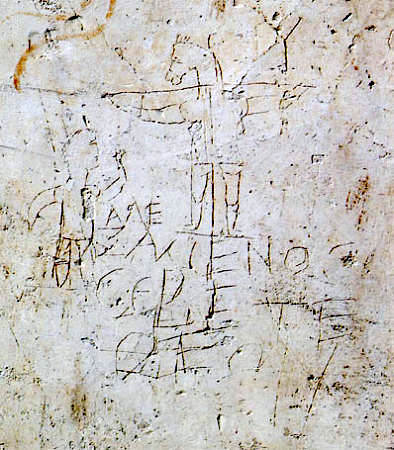Christians are often openly mocked for ascribing honour and worth to Jesus Christ. To skeptics and enemies of Christianity, it seems an absurd idea to worship a Jewish carpenter whose greatest accomplishment (humanly speaking) was to incite a riot and get himself executed.
Yet John Stott points out that this derision is not new:
“…Whether their background was Roman or Jewish or both, the early enemies of Christianity lost no opportunity to ridicule the claim that God’s anointed and man’s Savior ended his life on a cross. The idea was crazy.
This is well illustrated by a graffito from the second century, discovered on the Palatine Hill in Rome, on the wall of a house considered by some scholars to have been used as a school for imperial pages. It is the first surviving picture of the crucifixion, and is a caricature. A crude drawing depicts, stretched on a cross, a man with the head of a donkey. To the left stands another man, with one arm raised in worship. Unevenly scribbled underneath are the words ALEXAMENOS CEBETE THEON, “Alexamenos worships God.”
The cartoon is now in the Kircherian Museum in Rome. Whatever the origin of the accusation of donkey-worship (which was attributed to both Jews and Christians), it was the concept of worshipping a crucified man which was being held up to derision.”
– John Stott, The Cross of Christ: 20th Anniversary Edition (Downers Grove, IL: InterVarsity Press, 1989), 32.
It’s hard for us to imagine now, but to think of the Saviour of the world as a crucified Saviour would have been unthinkable to the Roman and Jewish cultures of the day.
——————-
“Let all the house of Israel therefore know for certain that God has made him both Lord and Christ, this Jesus whom you crucified.” Now when they heard this they were cut to the heart, and said to Peter and the rest of the apostles, “Brothers, what shall we do?”
And Peter said to them, “Repent and be baptized every one of you in the name of Jesus Christ for the forgiveness of your sins…” – Acts 2:36-38
——————-




